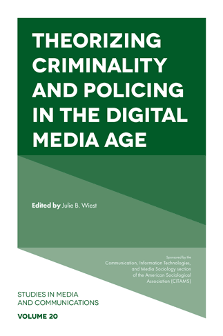
Index
Theorizing Criminality and Policing in the Digital Media Age
ISBN: 978-1-83909-112-4, eISBN: 978-1-83909-111-7
ISSN: 2050-2060
Publication date: 25 March 2021
Citation
(2021), "Index", Wiest, J.B. (Ed.) Theorizing Criminality and Policing in the Digital Media Age (Studies in Media and Communications, Vol. 20), Emerald Publishing Limited, Leeds, pp. 189-196. https://doi.org/10.1108/S2050-206020210000020006
Publisher
:Emerald Publishing Limited
Copyright © 2021 Emerald Publishing Limited
INDEX
Note: Page numbers followed by “n” indicate notes.
- Prelims
- Section I: New Opportunities for Criminals and Police
- Chapter 1: Does Exposure Matter? Media, Education, and Experience Affecting Technology-Mediated Abuse Knowledge, Understanding, and Severity-Perceptions
- Chapter 2: Dealing with Deepfakes: Reddit, Online Content Moderation, and Situational Crime Prevention
- Chapter 3: Attaining Security Through Algorithms: Perspectives of Refugees and Data Experts
- Section II: Digital Media Representations of Criminality and Policing
- Chapter 4: Dramatization of the @GANGSTA: Instagram Cred in the Age of Glocalized Gang Culture
- Chapter 5: Perp Walks as Contested Rituals: Documents, Affordances, and Performances
- Chapter 6: Images of Crime: Empathetic Newsworthiness and Digital Technologies in the Production of Police News on Television in Argentina
- Section III: Studying Criminality and Policing in the Digital Media Age
- Chapter 7: “Every Day When I Go to Work, I Wonder If it Will Be the Day I Die”: Sensemaking Mass Media and School Shootings
- Chapter 8: Lost in the Mediascape: Embracing Uncertainties and Contradictions at the Cultural Nexus of Crime and Media
- Chapter 9: Five Things that Went Wrong with Media Violence Research
- Index